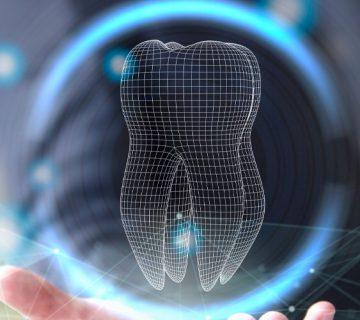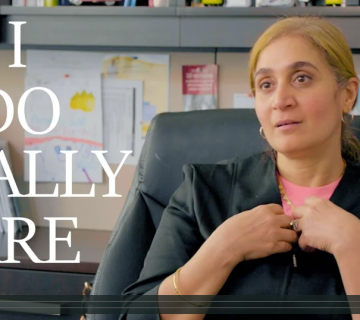What’s Really Behind a Smile
 A small muscle movement is all it takes to turn up the sides of your mouth, but a smile packs a surprising amount of power!
A small muscle movement is all it takes to turn up the sides of your mouth, but a smile packs a surprising amount of power!
Studies show that people think they already know someone if that person smiles at them, even if it’s an absolute stranger. The theory: Scientists believe the need to bond is rooted in our evolutionary past. Survival was more likely when people combined forces, so humans acquired the smile as a way to signal friendliness and to induce an agreeable sense of shared history, whether there was one or not.
Today, when someone smiles, a glum mood is lifted, an apology is accepted, a person’s shaky self-confidence gets a boost, a deal is struck, a physical attraction is communicated. But change the cast of a smile and the consequences shift. A rival grins to get under your skin; a bully smirks to unsettle his mark. Understanding the nuances helps ensure that you send—and receive—the right mouth message. Here, some intriguing insights about this familiar gesture.
Outer Smile, Inner Darkness
Ironically, a smile can express contempt. Bullies—whether they’re on the playground or in the office—may want the recipients to see their glee and realize their malevolent intent. The result is a conscious disconnect between outward expression and inner feelings. Other times, the disconnect may be unconscious, the result of pushing aside negative feelings. A person may have heard as a child that enraged feelings should never be expressed, so even the slightest inkling of anger is covered with a smile.
The Most Powerful Expression
Even a fleeting smile has the capacity to burrow deep into the subconscious of the person who sees it and set off positive changes from within. For example, a smile of just a mere four-hundredths of a second (what researchers refer to as subliminal priming) is enough to produce a mini emotional high in others; it makes people see things around them in a more positive light. Boring material becomes more interesting, or a nondescript picture seems to have more flair. Indeed, researchers have found that some foods even taste better when preceded by a subliminal smile. And what’s more, these expressions are contagious: In one study, when participants were exposed to these smiles—even though they couldn’t remember seeing them—their own faces mirrored what they “saw.”
Don’t Believe It
Liars don’t smile more than truth tellers, a recent study confirmed. However, they do display more manufactured smiles. They use these expressions to divert others from the fact that they’re being handed a bill of goods. The exception: When liars had to make up a lie on the spot (as opposed to having time to prepare their story), they tended to display spontaneous embarrassed smiles—which suggests discomfort with their attempt to fake someone out.
Which Came First: The Emotion or the Smile?
You may think facial expressions simply reflect your feelings, but to some extent they cause them as well. In fact, studies have shown that expressions may act like the volume control on an MP3 player: Rev up your smile, rev up your feelings; turn down your smile, turn down your feelings.
A Matter of Trust
People’s facial expressions often drive our gut feelings toward them. In one study, a group of students were asked to imagine they were members of a college disciplinary panel that had to determine whether or not a student had cheated on an exam. They were each given a folder that contained background material suggesting the person had cheated, and clipped to the outside of the folder was a photograph of the accused—in some of the photos, she was smiling; in others, she displayed a neutral expression. Nearly all the study participants decided the student was guilty, but those who had seen the smiling photo thought she should be given the benefit of the doubt. To them, that smile meant she was trustworthy.
Genuine vs. Plastered On
Not all grins come naturally. There are real, spontaneous smiles, and then there are the fake, manufactured ones we put on consciously. What’s different about them? Psychophysiologist Gary Schwartz and his colleagues found that manufactured smiles are on average 10 times bigger than spontaneous ones, most likely because their point is to be seen. They appear abruptly, stay at their peak a disproportionately long time, and exit as quickly as they arrived. In contrast, spontaneous smiles emerge more slowly and gradually, and they are brief but repetitive. Genuine delight is reflected more often as a sequence of short smile bursts, rather than a smile that arrives and stays put. They involve not only changes around the mouth (the retraction of the mouth corners), but around the eyes as well (creases at the corners and skin bunching under the eyes).
True Love or Sexual Passion?
Can a smile reflect the difference? Absolutely. Social psychologists believe that deep love and passionate sexual attraction elicit entirely different types of smiles. The more two people are in love, the more they show genuine smiles in each other’s company. On the flip side, people who report high levels of sexual desire—but not a whole lot of love—show fewer genuine smiles and a greater number of other lip actions (e.g., lip bites and licks). In short, genuine smiles communicate the desire to be close; lip movements convey passion.
Mixed Signals
Men like to see women smile. In fact, studies show that men are considerably more attracted to women who flash grins. But a lot of times those megawatt beams are misinterpreted. Studies have found that what women intend as mere friendliness is often misconstrued by men as flirtatiousness and a signal of sexual interest. Women, on the other hand, tend to see a man’s smile as a supportive gesture.
The Gender Divide
Studies reveal that women smile significantly more than men do, especially in their late teens and as young adults. No surprise: It’s a time when each gender is sending out heavy sexual signals. Also, males are less likely to return a smile, especially to another guy. Blame testosterone: Studies show that men with high levels are averse to smiling. But there are times when smiling is the best way to convey masculinity. When men smile under duress or laugh at fear, they’re showing that everything is under control.





